Omid Mersa
Assisted Excitation of Activations: A Learning Technique to Improve Object Detectors
Jun 12, 2019



Abstract:We present a simple and effective learning technique that significantly improves mAP of YOLO object detectors without compromising their speed. During network training, we carefully feed in localization information. We excite certain activations in order to help the network learn to better localize. In the later stages of training, we gradually reduce our assisted excitation to zero. We reached a new state-of-the-art in the speed-accuracy trade-off. Our technique improves the mAP of YOLOv2 by 3.8% and mAP of YOLOv3 by 2.2% on MSCOCO dataset.This technique is inspired from curriculum learning. It is simple and effective and it is applicable to most single-stage object detectors.
Multi-Representational Learning for Offline Signature Verification using Multi-Loss Snapshot Ensemble of CNNs
Mar 11, 2019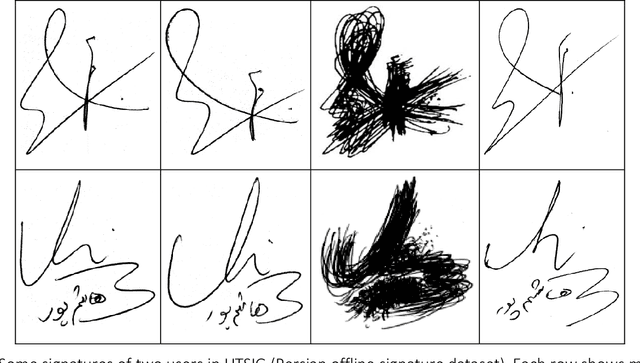
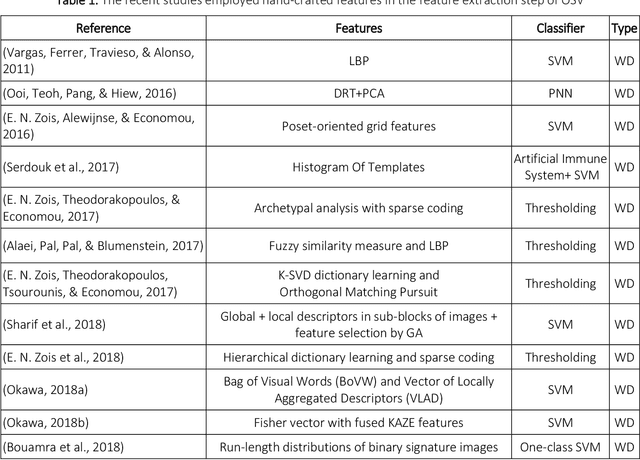
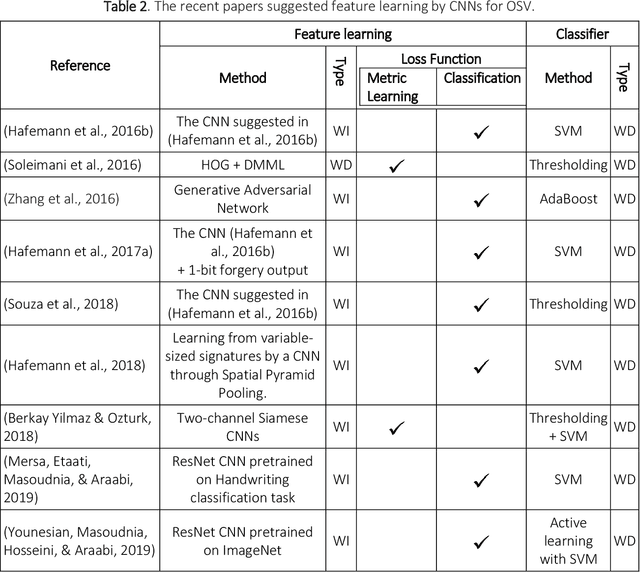
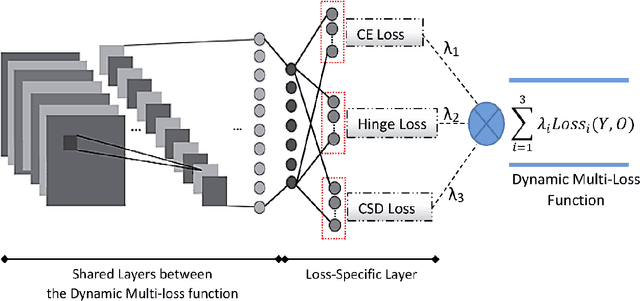
Abstract:Offline Signature Verification (OSV) is a challenging pattern recognition task, especially in presence of skilled forgeries that are not available during training. This study aims to tackle its challenges and meet the substantial need for generalization for OSV by examining different loss functions for Convolutional Neural Network (CNN). We adopt our new approach to OSV by asking two questions: 1. which classification loss provides more generalization for feature learning in OSV? , and 2. How integration of different losses into a unified multi-loss function lead to an improved learning framework? These questions are studied based on analysis of three loss functions, including cross entropy, Cauchy-Schwarz divergence, and hinge loss. According to complementary features of these losses, we combine them into a dynamic multi-loss function and propose a novel ensemble framework for simultaneous use of them in CNN. Our proposed Multi-Loss Snapshot Ensemble (MLSE) consists of several sequential trials. In each trial, a dominant loss function is selected from the multi-loss set, and the remaining losses act as a regularizer. Different trials learn diverse representations for each input based on signature identification task. This multi-representation set is then employed for the verification task. An ensemble of SVMs is trained on these representations, and their decisions are finally combined according to the selection of most generalizable SVM for each user. We conducted two sets of experiments based on two different protocols of OSV, i.e., writer-dependent and writer-independent on three signature datasets: GPDS-Synthetic, MCYT, and UT-SIG. Based on the writer-dependent OSV protocol, we achieved substantial improvements over the best EERs in the literature. The results of the second set of experiments also confirmed the robustness to the arrival of new users enrolled in the OSV system.
Learning Representations from Persian Handwriting for Offline Signature Verification, a Deep Transfer Learning Approach
Feb 28, 2019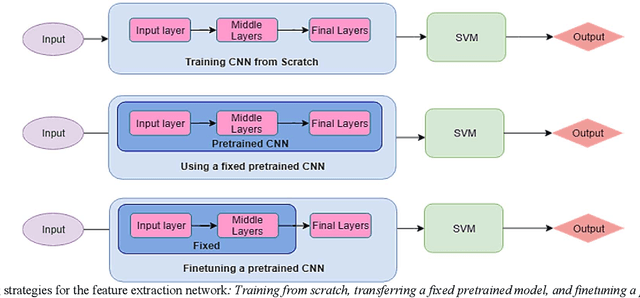

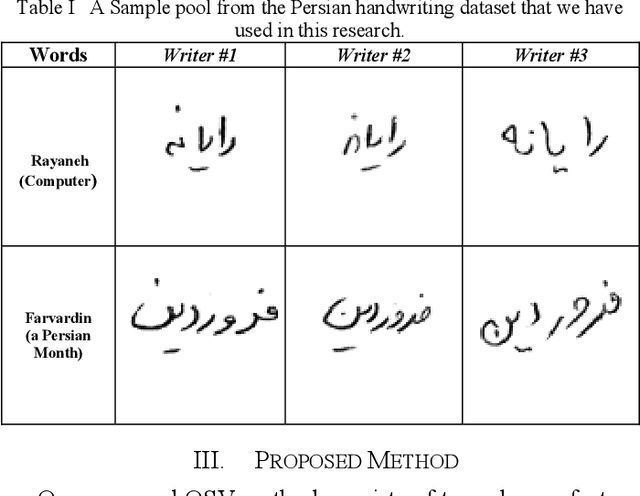
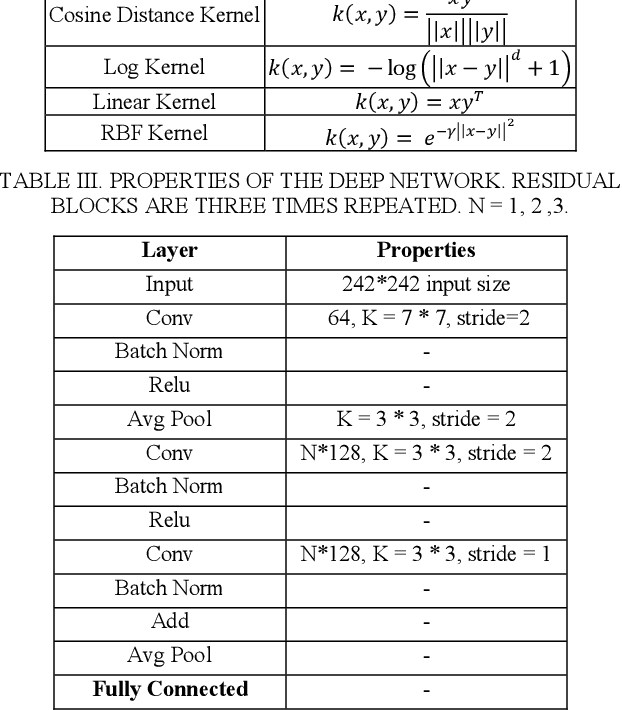
Abstract:Offline Signature Verification (OSV) is a challenging pattern recognition task, especially when it is expected to generalize well on the skilled forgeries that are not available during the training. Its challenges also include small training sample and large intra-class variations. Considering the limitations, we suggest a novel transfer learning approach from Persian handwriting domain to multi-language OSV domain. We train two Residual CNNs on the source domain separately based on two different tasks of word classification and writer identification. Since identifying a person signature resembles identifying ones handwriting, it seems perfectly convenient to use handwriting for the feature learning phase. The learned representation on the more varied and plentiful handwriting dataset can compensate for the lack of training data in the original task, i.e. OSV, without sacrificing the generalizability. Our proposed OSV system includes two steps: learning representation and verification of the input signature. For the first step, the signature images are fed into the trained Residual CNNs. The output representations are then used to train SVMs for the verification. We test our OSV system on three different signature datasets, including MCYT (a Spanish signature dataset), UTSig (a Persian one) and GPDS-Synthetic (an artificial dataset). On UT-SIG, we achieved 9.80% Equal Error Rate (EER) which showed substantial improvement over the best EER in the literature, 17.45%. Our proposed method surpassed state-of-the-arts by 6% on GPDS-Synthetic, achieving 6.81%. On MCYT, EER of 3.98% was obtained which is comparable to the best previously reported results.
 Add to Chrome
Add to Chrome Add to Firefox
Add to Firefox Add to Edge
Add to Edge